Soldering is a process that involves the application of heat and pressure to two metal surfaces, in order to join them together. A heat gun is one of the most important tools for any soldering job, and it’s important to understand how to use it properly. This guide aims to provide you with all the information you need in order to successfully solder with a heat gun.
You’ll need to select the right type of soldering iron and the correct temperature for your project. When using a heat gun, it is important to remember that you don’t want too much heat as this can damage the components or cause them to melt together. You also want to make sure that there isn’t any moisture present in the area, as this can cause problems with the soldering process.
Once you’ve selected and set up your heat gun correctly, it’s time to get started!
Hardware Overview
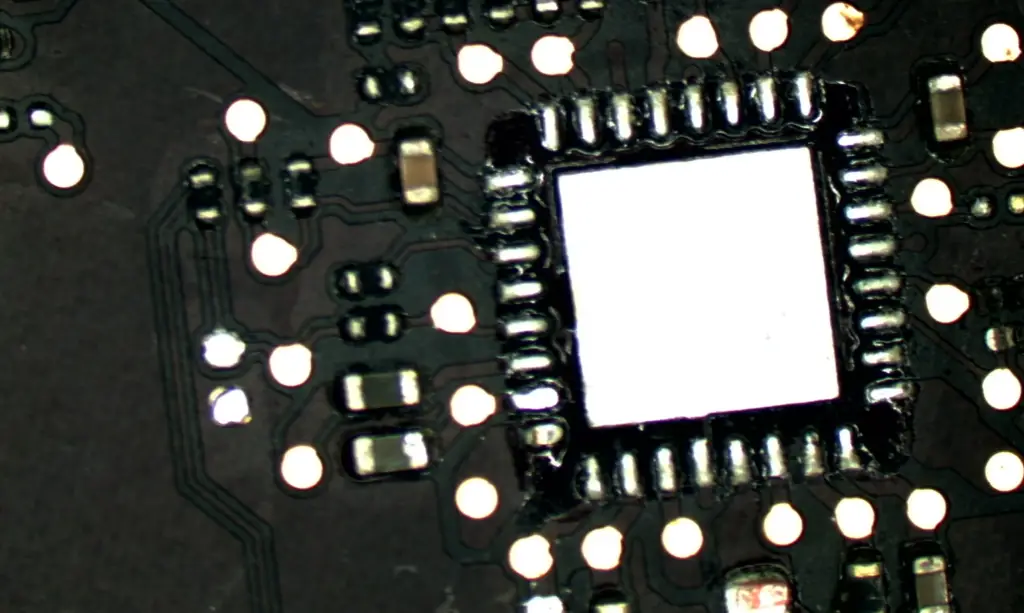
What types of heat guns are available?
Infrared Heat Guns
Infrared heat guns are designed to heat up objects without making contact. This type of heat gun is often used for soldering as it directs the flame onto the components with precision and accuracy. The main advantage of an infrared heat gun is that it heats up quickly, allowing you to get the job done faster than other types of heat guns. [1]
Industrial Heat Guns
Industrial heat guns are designed for more demanding tasks. They are bigger and heavier than other types of heat guns, but they also generate higher temperatures, making them ideal for heavy-duty soldering applications. Industrial heat guns usually come with adjustable temperature settings so you can choose the perfect setting depending on the job at hand. [1]
Corded Heat Guns
Corded heat guns are the most common type of heat gun and are widely available in DIY stores. They usually come with a range of temperature settings, allowing you to adjust the intensity depending on the task. The main disadvantage of corded heat guns is that they cannot be used for long periods of time due to their restricted power supply. [1]
Cordless Heat Guns
Cordless heat guns are the most convenient type of heat gun as they can be used anywhere without having to worry about power cables. These heat guns usually come with adjustable temperature settings and are designed for easy portability. The main disadvantage of cordless heat guns is that their battery life tends to be shorter than other types of heat guns. [1]
Features of heat guns
Heat guns come in different shapes and sizes, but they all offer the same basic features. These include a variable temperature knob which allows you to fine-tune the amount of heat being produced, as well as a selection of nozzle attachments designed for specific applications like soldering. Heat guns can also be used to strip paint, thaw frozen pipes, activate adhesives, and more.
When using a heat gun for soldering, it is important to select the correct nozzle attachment for the job. If you are working on delicate electronic components, make sure to select a narrow nozzle tip that concentrates the heat onto the specific area being worked on. This will help ensure your parts don’t become damaged by too much heat exposure. [2]
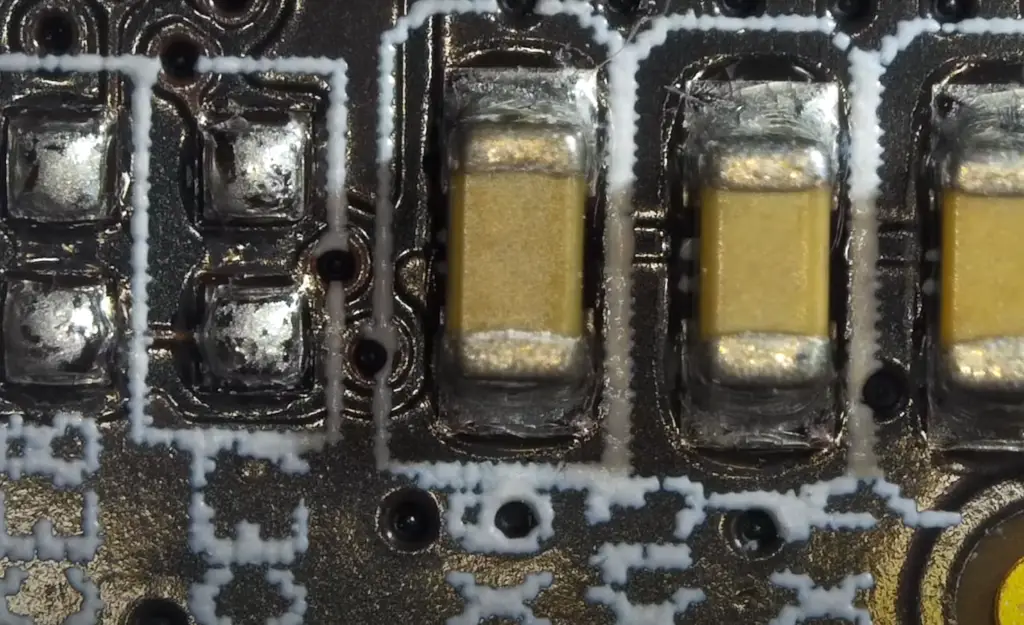
How to Use a Hot Air Rework Station?
Using a hot air rework station is an efficient and easy way to solder components onto a circuit board. A hot air rework station consists of a soldering iron, a heat gun, and the hot air nozzle. To use a hot air rework station correctly, first ensure that the board is clean and free from any dirt or debris. Then place your component onto the board and put the heat gun nozzle over it.
Adjust the temperature of the hot air rework station to suit your needs, usually around 300°F for standard components. Then press down on the trigger of your soldering iron or heat gun to begin heating up the component. Once it is sufficiently heated, apply a small amount of solder directly onto the contact points and use tweezers to move the solder into position. Once all of the contacts are connected, turn off the hot air rework station and allow the component to cool down. [2]
Replacement Parts
When soldering with a heat gun, it is always helpful to have extra replacement parts on hand. It can be incredibly frustrating when a part fails or breaks mid-project.
One of the most important replacement items you should consider for any soldering project are tips. Tips are the metal parts that come into direct contact with the soldering iron or heat gun and conduct the heat to the joint. Over time, tips can become worn or may break due to excessive force. It is important to inspect your tips regularly and replace them as needed. Not only will this help prevent problems during soldering projects, but it will also extend the life of your equipment.
Another item you should consider stocking up on is solder. When soldering with a heat gun, it can be difficult to calculate the exact amount of solder needed for each joint. Having additional solder on hand will allow you to make quick repairs without having to worry about running short or having too much. [2]
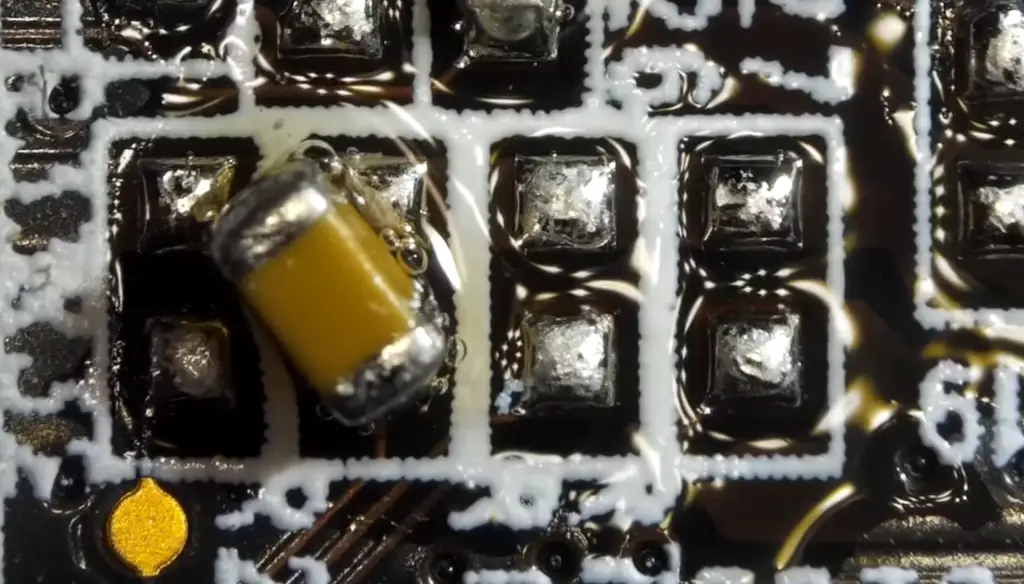
Troubleshooting
If you’re having trouble with soldering, here are a few tips that may help.
- Check your temperature settings. If your heat gun is set too low or too high, the solder won’t melt properly and the joint will be weak. The ideal temperature for soldering with a heat gun is around 600 to 700 degrees Fahrenheit (315 to 371 degrees Celsius).
- Make sure the joint is clean. Any dirt or grease on the surface will prevent a proper connection between the heated metal and solder. Clean the joint with alcohol or acetone before soldering.
- Use quality solder. Poor-quality solder won’t flow properly when heated and could create a weak joint that’s prone to failure. For best results, use a solder with a low melting point (under 400 degrees Fahrenheit).
- Take your time. Soldering with a heat gun takes patience and concentration. Don’t rush through the process; take your time to make sure each joint is properly heated and soldered. [2]
How to stay safe when using a heat gun?
When using a heat gun, it is important to take safety measures in order to prevent any accidents. Here are some tips to stay safe when soldering with a heat gun:
- Wear protective clothing such as goggles and gloves.
- Make sure the area you’re working in is well ventilated.
- Stay away from flammable materials.
- Keep the heat gun away from children and pets.
- Read product instructions carefully before use.
- Do not touch the hot nozzles or barrels with bare hands.
- Unplug the heat gun when not in use and keep it out of reach from children and animals.
- Make sure the cord is in good condition and not damaged.
- Never point the heat gun towards yourself or others.
- Always use caution when handling a hot gun, and never put it down on any flammable materials. [2]
What are heat guns used for?
Using heat guns for removal
Heat guns are multifunctional tools that can be used for a variety of tasks, including paint removal, shrink-wrapping, activating adhesives, thawing frozen pipes, softening caulk and adhesive residues, loosening rusted or corroded bolts and nuts, curing and drying materials such as wood and concrete; they can also be used to solder. Heat guns can generate temperatures of up to 1,100°F (593°C). [1]
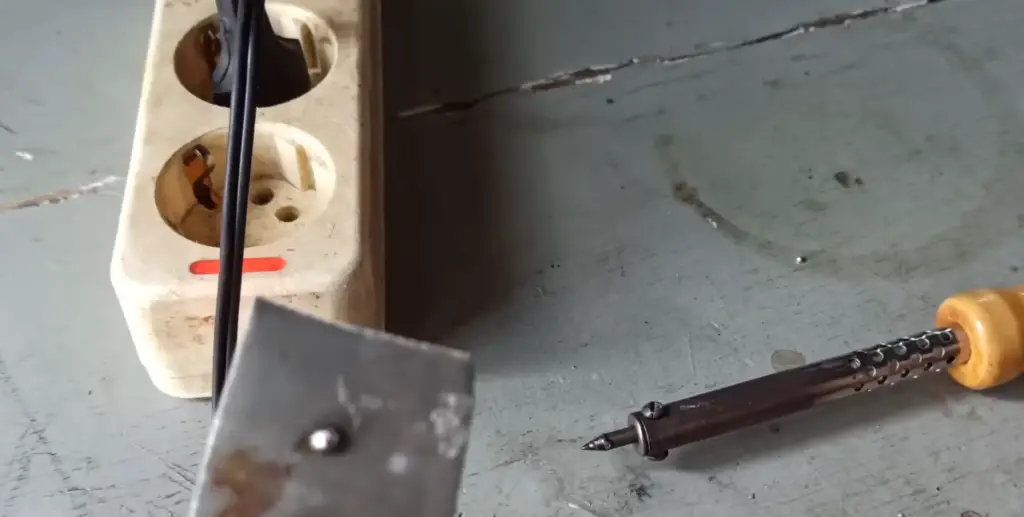
Using heat guns for softening
A heat gun can be used to soften and solder joints quickly. The high temperatures generated by the heat gun create a strong bond between two materials, such as copper pipe or electrical connections, without the need for flux or soldering wire. When done correctly, this method of soldering can create permanent seals that are stronger than those created with conventional soldering techniques. [1]
Using heat guns for repairs
Heat guns can also be used to make repairs on existing electrical connections or plumbing systems. By heating the joint up to a temperature of about 600°F (315°C), the solder will soften, allowing you to loosen it and make adjustments. Once the adjustments are made, the soldering material needs to be reapplied and allowed to cool before use. [1]
Using heat guns for soldering and desoldering
Heat guns can be used to solder and desolder small electronic components as well. They are especially useful for soldering surface-mounted components, as they provide a more precise temperature than other soldering tools. When desoldering, the heat gun is used to melt the existing solder, allowing you to remove the component from its board. [1]
Other uses for heat guns
Heat guns can be used for a wide variety of tasks, such as shrinking plastic tubing, bending plastics, and even welding certain materials together. They are an indispensable tool in many industries where precise temperature control is necessary.
In addition to their industrial uses, heat guns can also be a great DIY tool. With the right safety precautions, they can help you complete tasks quickly and easily. With a bit of practice, you can become proficient in soldering with a heat gun. [1]
What is the best heat gun to use?
The best heat gun to use for soldering is the Master Appliance HG-501A Professional Heat Gun. This heat gun features a two-speed switch and adjustable temperature control up to 1000 degrees Fahrenheit, making it perfect for any soldering job. It also has an insulated nozzle, so you won’t have to worry about getting burned while using it. Plus, it comes with a five-year warranty, so you can rest assured that your purchase is covered.
If you don’t want to invest in a professional heat gun, there are some other less expensive options on the market. The Wagner 0503008 HT1000 Heat Gun is an affordable option with adjustable temperature control up to 1000 degrees Fahrenheit and two speeds. It also has a detachable nozzle for better access to hard-to-reach areas.
Another great option is the Wagner 0503007 HT800 Heat Gun, which offers adjustable temperatures up to 800 degrees Fahrenheit and two speeds. It’s perfect for basic soldering tasks like fixing electronics or jewelry. [2]
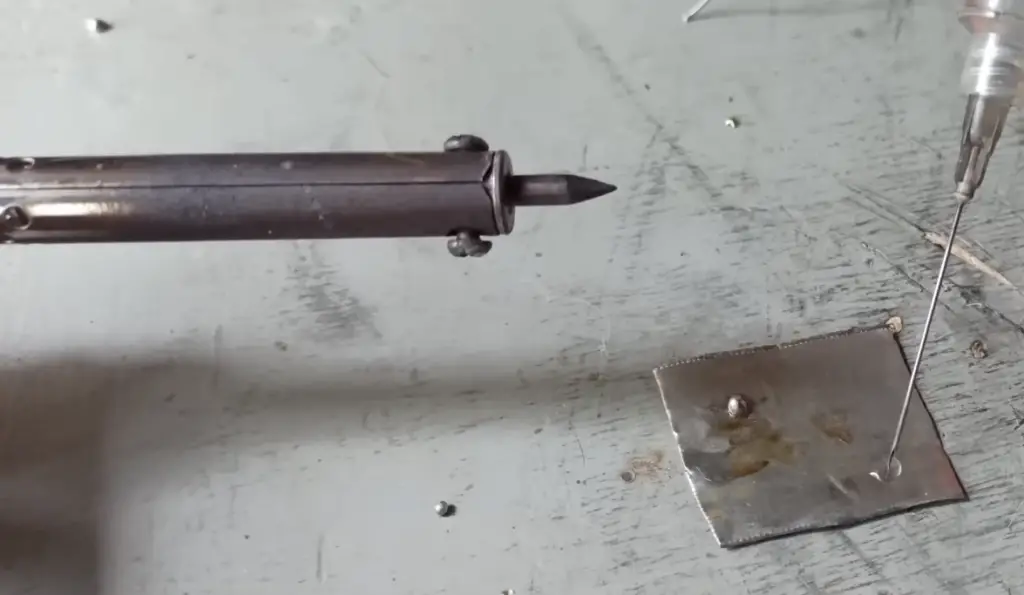
FAQ
What temperature should a heat gun be for soldering?
It is important to note that if the temperature is too high, it can damage components and cause solder joints to become brittle. Additionally, a higher temperature can also cause burning and oxidation, which will make soldering difficult in the future.
What temperature should I reflow my solder with a heat gun?
The temperature for reflowing solder with a heat gun should be between 400-600 degrees Fahrenheit. If the temperature is too low, the solder may not melt and form a connection between components correctly. Since higher temperatures will result in oxidation and burning of the components, it is important to maintain a steady balance when reflowing solder with a heat gun.
How do you use a hot air gun for soldering?
Using a hot air gun for soldering is relatively easy and straightforward. First, ensure that the temperature of the heat gun is set correctly (between 400-600 degrees Fahrenheit). Once this is done, apply heat to the joint while adding solder to it at the same time. The solder should begin to melt and form a secure connection with the components. Finally, after the desired connection is made, remove the heat and allow the solder to cool.
What is the difference between a heat gun and a hot air gun?
The main difference between a heat gun and a hot air gun is the type of heat they emit. A heat gun emits direct heat, while a hot air gun emits heated air. This makes hot air guns more suitable for soldering as it can be used to target specific areas with precision and accuracy. Additionally, since the air flow is adjustable, it is easy to control the temperature and manage the risk of burning components.
Can I melt metal with a heat gun?
Yes, it is possible to melt metal with a heat gun. However, when doing so you must ensure that the temperature is set correctly and the heat is applied slowly and evenly. It is also important to note that metals have different melting temperatures, so you must adjust the temperature accordingly. In addition, using protective gear such as gloves and goggles is recommended for safe operation.
Is a soldering iron better than a hot air gun?
The type of tool you use for soldering depends on the project. Generally, a soldering iron is better suited for small jobs that require precision and accuracy, while a hot air gun is better suited for larger projects. Additionally, some electronic components are more sensitive to heat and may require a soldering iron with a lower temperature setting in order to avoid damage.
What temperature should an air heat gun be?
The temperature of an air heat gun should be set between 400-600 degrees Fahrenheit in order to achieve optimal results. Setting the heat too low will result in incomplete solder joints, while setting it too high can damage components and cause burning or oxidation. It is important to maintain a steady balance when using an air heat gun in order to achieve consistent soldering results.
Useful Video: SMD Soldering Tutorial | Guide | Tools | Tecniques | Stencil
Conclusion
Soldering with a heat gun can be a great way to make strong and reliable connections in your projects. If you’re thinking of trying it, make sure to take your time and practice the process on some scrap material first. Remember that safety comes first. Be sure to wear gloves, protective eyewear, and keep all flammable materials away from the area you’re working in.
Once you understand the basics, it’s a relatively straightforward process that can give your projects the professional look and reliability you need. We hope this Soldering With a Heat Gun Guide has been helpful! Good luck and happy soldering!
References
- https://learn.sparkfun.com/tutorials/how-to-use-a-hot-air-rework-station/all
- https://uk.rs-online.com/web/content/discovery/ideas-and-advice/heat-guns-guide





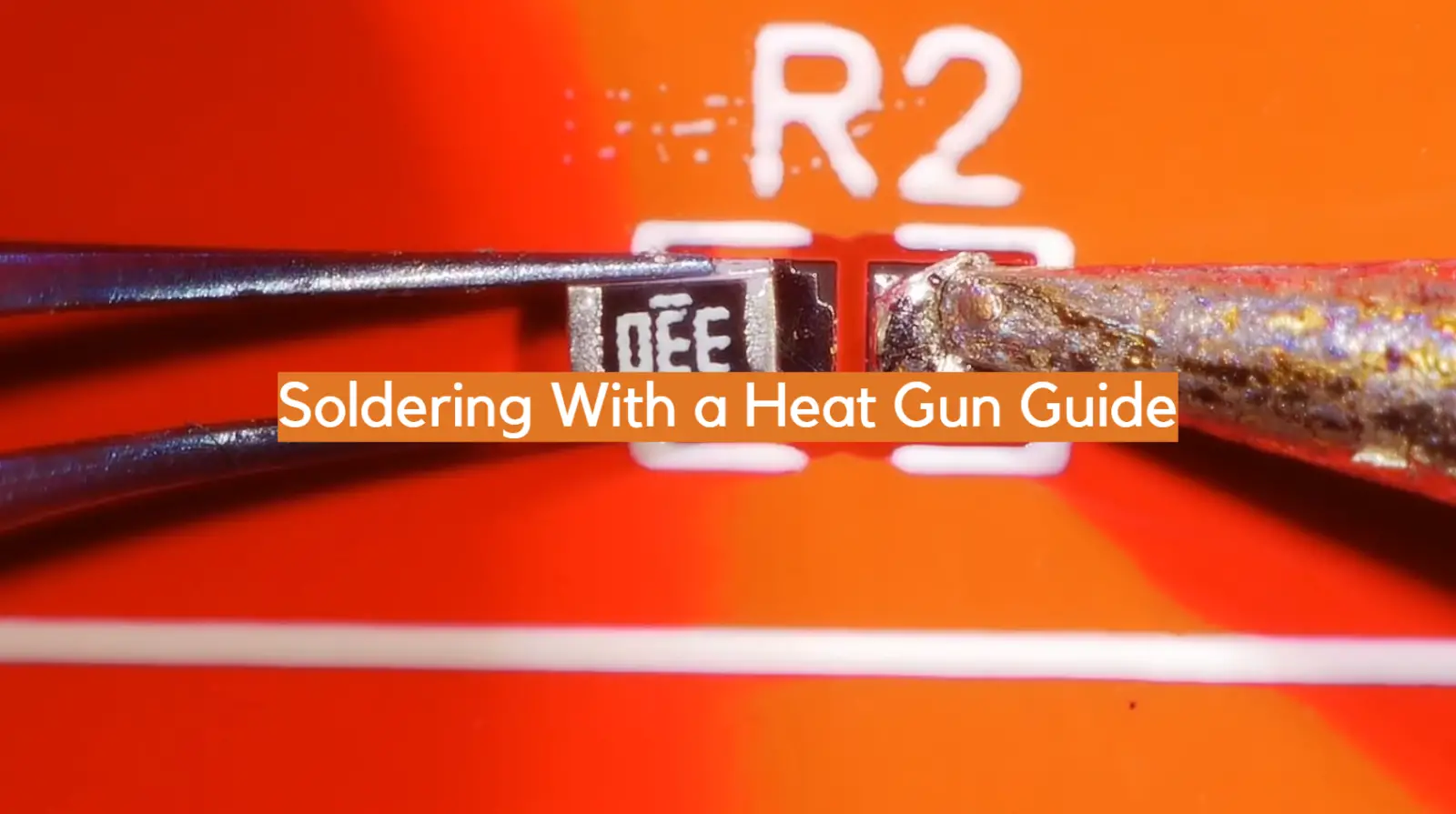




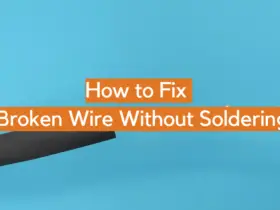

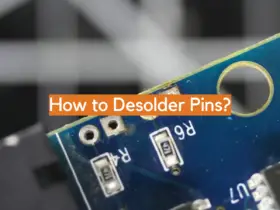
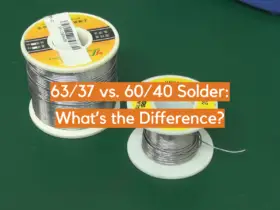
Leave a Reply